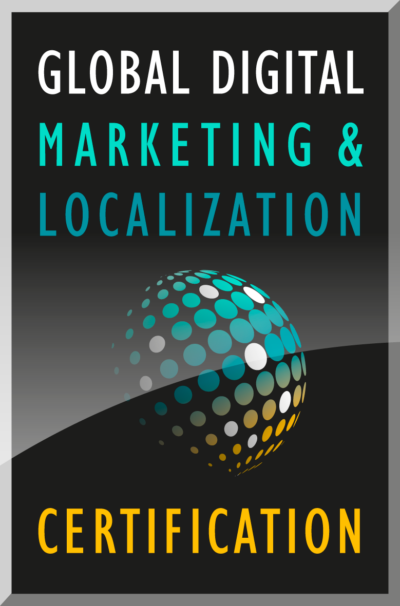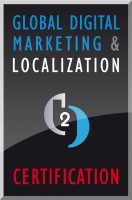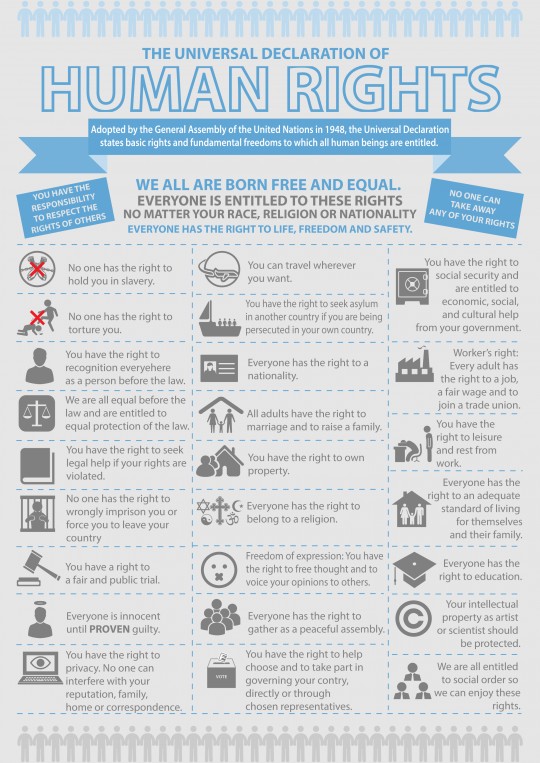This is the final paper presented by Jorge Carrillo, a recent graduate of the Global Digital Marketing and Localization Certification (GDMLC) program. This paper presents the work being produced by students of The Localization Institute’s Global Digital Marketing and Localization Certificate program. The contents of this Paper are presented to create discussion in the global marketing industry on this topic; the contents of this paper are not to be considered an adopted standard of any kind. This does not represent the official position of Brand2Global Conference, The Localization Institute, or the author’s organization.
It took some time to realize that Human rights are the minimum standards that allow all people to live with dignity, freedom, equality, justice, and peace. Within such rights, Privacy has been included in the Universal Declaration of Human rights (Article 12) and Accessibility within an additional convention specifically created to address the rights of persons with disabilities (CRPD).
During the creation and distribution of digital media for global markets, one natural question to ask is: “How can we implement and embrace such rights?”; the short answer might be “follow the rules that compliance and legal departments have defined.”
This approach to “follow the letter of the law”, addresses the legal risk for not meeting a particular requirement; however, it forgets that there is a cultural context in such rights, which are interpreted in different ways by different cultures.
Privacy and Accessibility are fantastic examples to illustrate this point. Let’s start with Privacy.
Privacy:
Without going into details of the different Privacy requirements a particular business should comply with, let’s consider a simple example, which is widely accepted: Publishing a privacy notice in a web site, which servers the purpose of being transparent about data processing activities involving personal information.
To write such privacy notice, we could obtain assistance from a lawyer, who will ensure that all the required information is included; however, this text will be read by a user – who might not have a law degree, and might have a different perception of what privacy actually means.
This brings us to the key point – privacy is a cultural and social concept. An individual that decides to move to another planet with no other human, will not achieve more privacy. He or she might be isolated, but privacy make sense when there are other individuals. As a consequence, the challenge we have is: how can we create a privacy notice that will resonate different cultural definitions of this universal right?
The answer can be discovered by exploring the spirit of particular privacy regulation. For example, privacy within the U.S, while regulated by different laws depending on the industry, has a main chief federal agency, known as the Federal Trade Commission. This agency was created to prevent business practices that are anticompetitive or deceptive or unfair to consumers; and it is safe to say that Privacy was initially framed as a consumer protection within the U.S.
Now, if we take Europe and the European Data Protection law, which has been recently updated, Privacy is considered as a fundamental right, which is captured in Article 8(1) of the Charter of Fundamental Rights of the European Union and Article 16(1) of the Treaty on the Functioning of the European Union (TFEU). We could say that Privacy in Europe is framed in the context of human rights.
By exploring these two cases, it is clear that localizing a privacy notice is not about translating a text; but delivering a message that will help to increase trust, when this message is tailored to properly communicate the different ways that Privacy is perceived (such as a consumer protection or human right).
And I would like to stress the word “Perception” – which brings to the next area: Accessibility.
Using the same example of a web site, we need to ensure that users will be able to perceive web content, at the end of the day, users need to be able to capture information so that they can process it. Non-text digital content, such as pictures, in the web is a challenge in that respect, as not all the users might be able to see or properly perceive such content. While one could follow the Web Content Accessibility Guidance (WCAG 2.0) and specify a short text alternative for a particular image, the reality is that that the amount of information embedded in a picture is difficult to capture in a short text.
Think about the following scenario – imagine that nobody has seen the “Tour Eiffel” or “The Statue of Liberty”, which alternative text would you include?
Therefore, development of digital content that can be perceived by a wide number of users, require an additional effort beyond specifying a text alternative.
In summary, we have explored two universal rights (Privacy and Accessibility) which are perceived in different ways by different individuals. To embrace such rights during the development of global digital content, one requires to ensure that digital content is tailored and presented in a way that will resonate and be accessible to a wide variety of individuals, so we are able to trigger the desired outcome our digital content is supposed to create.
In the case of Privacy and Accessibility this means increase brand reputation, trust or reaching a wide number of individuals with different capabilities.
Copyright © 2016 The Localization Institute. All rights reserved. This document and translations of it may be copied and furnished to others, and derivative works that comment on or otherwise explain it or assist in its implementation may be prepared, copied, published, and distributed, in whole or in part, without restriction of any kind, provided that the above copyright notice and this section are included on all such copies and derivative works. However, this document itself may not be modified in any way, including by removing the copyright notice or references to The Localization Institute, without the permission of the copyright owners. This document and the information contained herein is provided on an “AS IS” basis and THE LOCALIZATION INSTITIUTE DISCLAIMS ALL WARRANTIES, EXPRESS OR IMPLIED, INCLUDING BUT NOT LIMITED TO ANY WARRANTY THAT THE USE OF THE INFORMATION HEREIN WILL NOT INFRINGE ANY OWNERSHIP RIGHTS OR ANY IMPLIED WARRANTIES OF MERCHANTABILITY OR FITNESS FOR A PARTICULAR PURPOSE.
Author Bio:
Jorge Carrillo, PhD. is an experienced certified professional in the areas of Information Governance and Compliance in a variety of Industries in the private sector in Europe. Jorge has been helping organizations in assessing, designing, implementing or improving IT processes to be compliant with a variety of regulatory, security, and privacy requirements. In addition, he is an active guest Lecturer at several universities – sharing good practices and methodologies in Accessibility, Privacy and Project Management.”
Click to connect with Jorge on Linkedin: CONNECT WITH JORGE
His website: www.jorgecarrillo.cz












